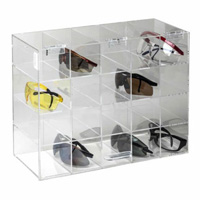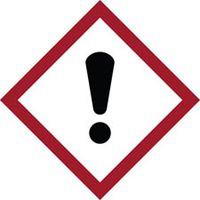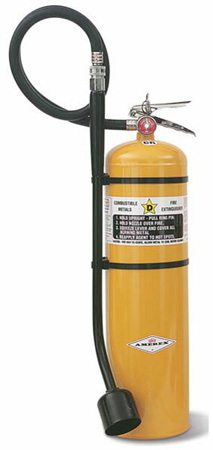



Find all of your laboratory and workplace safety supplies at Safety Emporium!
 HMIS |
 Glossary Index |
 HRS |
| MSDS Topics |
Free Sites | FAQ's | Regulations | Glossary | Software | Suppliers |
| Books | Forum | Poll | Fun stuff | Quiz | Store | |
| Understand your MSDS with the MS-Demystifier | Search ALL our MSDS info | |||||

Laboratory operations are a breeze with Ohaus analytical balances from Safety Emporium.
A Hazard Not Otherwise Classified (HNOC) is defined in the 2012 version of the OSHA Hazard Communication Standard 29 CFR 1910.1200 paragraph (c) (HCS 2012) as:
an adverse physical or health effect identified through evaluation of scientific evidence during the classification process that does not meet the specified criteria for the physical and health hazard classes addressed in this section. This does not extend coverage to adverse physical and health effects for which there is a hazard class addressed in this section, but the effect either falls below the cut-off value/concentration limit of the hazard class or is under a GHS hazard category that has not been adopted by OSHA (e.g., acute toxicity Category 5).
Assignment as an HNOC within a particular health hazard class could occur if the evidence indicated a hazard so low as not to require classification, but which could present a danger to a vulnerable population. A hypothetical example is a chemical that has minimal hazards for healthy individuals but could pose a health hazard to someone with a weakened immune system. Likewise, an example of a physical HNOC would be a flammable liquid that tends to accumulate static charge.
Two closely related terms are used under the Canadian WHMIS system, but not OSHA's HCS:

Make your PPE readily available with safety dispensers from Safety Emporium.
HCS 2012 instituted a hazard classification process that rigorously assigns health hazards (Appendix A) and physical hazards (Appendix B) of a material into specific classes and then into specific categories based on listed criteria. For example, if a substance displays toxic effects upon a single exposure it is classified as having acute toxicity and then it is further categorized into Category 1, 2, 3, or 4 depending on the dose required to produce the effect (category 1 being the most toxic and 4 being lowest). HCS 2012 replaced the HCS 1994's far lower standard of hazard determination which only required the manufacturer to determine what hazards were posed by the material.
During the hazard classification process, one may encounter a hazard that does not meet the criteria to fit neatly into one of the ten specific health hazard or sixteen physical health hazards that OSHA specifically recognizes under the HCS 2012, but that would still be cause for concern. For example, the definition above specifically mentions acute toxicity Category 5 as an example. Category 5 does not exist under the HCS, but it is listed in the GHS (the UN model standard upon which HCS 2012 is derived). Per the GHS version 4 Table 3.1.1, footnote (g):
Criteria for Category 5 are intended to enable the identification of substances which are of relatively low acute toxicity hazard but which under certain circumstances may present a danger to vulnerable populations. These substances are anticipated to have an oral or dermal LD50 in the range of 2000-5000 mg/kg bodyweight and equivalent doses for inhalation. The specific criteria for Category 5 are:
- The substance is classified in this category if reliable evidence is already available that indicates the LD50 (or LC50) to be in the range of Category 5 values or other animal studies or toxic effects in humans indicate a concern for human health of an acute nature.
- The substance is classified in this category, through extrapolation, estimation or measurement of data, if assignment to a more hazardous category is not warranted, and:
- reliable information is available indicating significant toxic effects in humans; or
- any mortality is observed when tested up to Category 4 values by the oral, inhalation, or dermal routes; or
- where expert judgement confirms significant clinical signs of toxicity, when tested up to Category 4 values, except for diarrhoea, piloerection or an ungroomed appearance; or
- where expert judgement confirms reliable information indicating the potential for significant acute effects from other animal studies.
Recognizing the need to protect animal welfare, testing in animals in Category 5 ranges is discouraged and should only be considered when there is a strong likelihood that results of such a test would have a direct relevance for protecting human health.
Thus, if material fell into Acute Toxicity Class 5, it would be reportable as a HNOC on the Safety Data Sheet (SDS).
The two other GHS Categories not incorporated into HCS 2012 that would also require the HNOC designation are Skin Corrosion/Irritation, Category 3 and Aspiration Hazard, Category 2. Additional examples of HNOC's outside the scope of GHS are provided in the next section.

Get your GHS-compliant labels and signs from Safety Emporium.
OSHA and Health Canada have declared that use of the exclamation point pictogram is an appropriate symbol for the HNOC, HHNOC, and PHNOC classifications. OSHA permits such use if the label also indicates that the pictogram is being used for a hazard not otherwise classified (e.g., the words "Hazard Not Otherwise Classified" or "HNOC" must appear below the exclamation mark pictogram). For complete information on pictogram use for HNOC see this September 21, 2016 OSHA Memorandum, Clarifications to CPL 02-02-079, Inspection Procedures for the Hazard Communication Standard (HCS 2012).
A key point here is that HNOCs, like other classified health and physical effects, are intrinsic hazards of the material. In other words, the negative physical or health effects are not dependent on the quantity of the material or its physical size/shape (such as pellets or beads) etc. Thus, to use OSHA's example, water is not an HNOC even though one could be scalded by hot water or slip on a wet floor because these hazards are not inherently present in water. In contrast, even though the severity of toxic effects differ based on the amount of material to which one is exposed (the dose makes the poison, as they say), the mechanism by which a toxin such as hydrogen cyanide (HCN) does harm is always present and is not dependent on the amount of material (see here for a description). Toxicity is therefore an intrinsic property of hydrogen cyanide and HCN is classified accordingly.
And just because we know someone will bring this up, death by hyponatremia from drinking several gallons of water involves a mechanism not normally present, one that depends on the quantity of the water, and is therefore an extrinsic effect. Drinking normal amounts of water does not cause hyponatremia, meaning that ingesting water does not pose an intrinsic hazard.
If the hazard classification process identifies a hazard not otherwise classified, it must be reported on the Section 2 (Hazard(s) identifications) of the Safety Data Sheet per 29 CFR 1910.1200 Appendix D. It is not required to be reported on the label per 29 CFR 1910.1200 paragraph (f)(1), although the manufacturer is free to do so as long as this does not conflict with the other required label elements. This is yet another reason why you should always read the SDS before working with a chemical.

Get your Class D and other specialty extinguishers from Safety Emporium.
HNOC's are generally hazards with a low associated risk except under special circumstances. Some examples of these include:
As you can see, HNOC's generally relate to very special circumstances, so the wording for these will generally vary from manufacturer to manufacturer, unlike hazard statements and precautionary statements which have explicitly required wording under the formal hazard classification process.
Finally, remember that if a hazard can be classified into an existing hazard class and category, the hazard can not be called an HNOC and the classification rules apply. For example, if a material poses an aspiration hazard, that is a classifications already recognized by HCS 2012 and the appropriate signal word, pictograms, hazard statements, and precautionary statements must appear on the SDS and label.
See also: hazard classification, hazard statements, pictograms, precautionary statements, signal words.
Additional definitions from Google and OneLook.
Entry last updated: Saturday, December 31, 2022. This page is copyright 2000-2025 by ILPI. Unauthorized duplication or posting on other web sites is expressly prohibited. Send suggestions, comments, and new entry desires (include the URL if applicable) to us by email.
Disclaimer: The information contained herein is believed to be true and accurate, however ILPI makes no guarantees concerning the veracity of any statement. Use of any information on this page is at the reader's own risk. ILPI strongly encourages the reader to consult the appropriate local, state and federal agencies concerning the matters discussed herein.